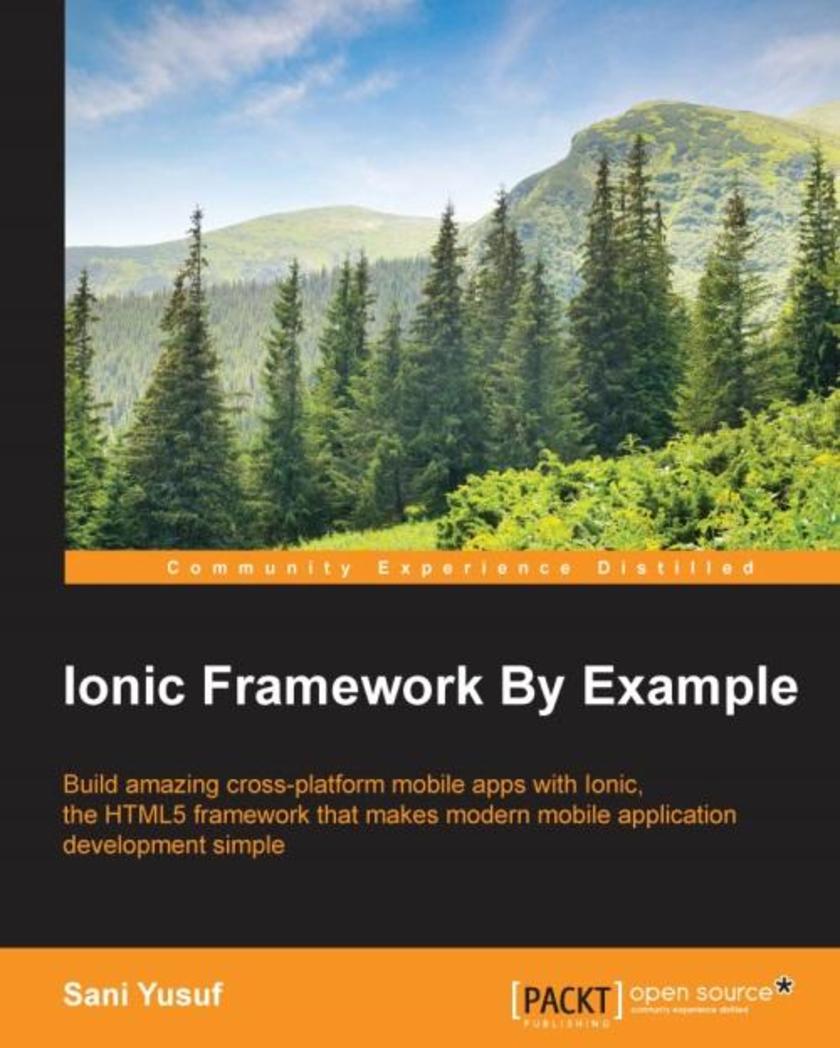
Ionic Framework By Example
¥54.49
Build amazing cross-platform mobile apps with Ionic, the HTML5 framework that makes modern mobile application development simpleAbout This BookLearn how to use one of the most exciting mobile development frameworks around to build even better appsFollow the featured sample projects to experience Ionic’s impressive capabilitiesExtend your developer skillset to build, test, and launch mobile apps with confidenceWho This Book Is ForThis book is for anyone who wants to see Ionic in action - and find out how it could transform the way they build mobile apps. If you’re a JavaScript web developer, you’ll be building great projects in no time.What You Will LearnLearn Ionic by creating three complete mobile applicationsGet to know the Ionic CLIAdd basic and advanced features to the Ionic frameworkConnect an Ionic app with a Firebase back endIntegrate PhoneGap plugins with NG-CordovaTest your apps to improve and optimize performanceIn DetailChange doesn’t have to be challenging. Sometimes it can be simple – sometimes it just makes sense. With Ionic, mobile development has never been so simple, so elegant and obvious. By helping developers to harness AngularJS and HTML5 for mobile development, it’s the perfect framework for anyone obsessed with performance, and anyone that understands just how important a great user experience really is.This book shows you how to get started with Ionic framework immediately. But it doesn’t just give you instructions and then expect you to follow them. Instead it demonstrates what Ionic is capable of through three practical projects you can follow and build yourself.From a basic to-do list app, a London tourist app, to a complete social media app, all three projects have been designed to help you learn Ionic at its very best. From setting up your project to developing on both the server side and front end, and best practices for testing and debugging your projects, you’ll quickly become a better mobile developer, delivering high performance mobile apps that look awesome.Ionic Framework by Example is for people who don’t want to learn now, build later – it’s for people who want to learn and build at the same time – so they can meet today’s mobile development challenges head on and deliver better products than anyone else.Style and approachThis book isn’t just an instruction manual. It doesn’t just tell you what to do – it shows you. Featuring three sample projects, it’s been created so you can get started with Ionic immediately.

Getting Started with NativeScript
¥54.49
Explore the possibility of building truly native, cross-platform mobile applications using your JavaScript skill—NativeScript!About This BookSave your marketing time by building for iOS, Android, and Windows Mobile platforms simultaneouslyBe an ace at utilizing the features of NativeScript and its ability to communicate with each of the host device libraries nativelyProficiently, build your fully cross-platform communication application exhibiting the fundamentals of NativeScriptWho This Book Is ForIf you are a JavaScript developer and want to build cross-platform applications, then this book is just the right one for you!What You Will LearnInstall and compile your application in NativeScriptGet important know-how on the NativeScript project structureDevelop and style your screens for multiple platformsCreate a full-featured cross-platform communication applicationImport and use several third-party componentsSimplify and deal with device resolution and cross-platform issuesTest and deploy your applicationIn DetailNativeScript allows you to build a fast cross-platform application that has a native UI. NativeScript is a true cross-platform framework that generates native speed applications using the native components of the host platform, all using JavaScript. Although NativeScript allows you to build your application in JavaScript, you have full access to the host OS from your code, allowing you to easily tweak or use new platform features instantly at native code speeds.Whether you have already developed multiple applications or zero applications, this book will help you to develop your next application in a cross-platform framework quickly, saving you a massive amount of time and money.This book concisely shows you NativeScript’s built-in framework that allows you to rapidly develop a fully-working compiled cross-platform application in just a few chapters. It starts by laying the foundation of NativeScript and working through the fundamentals to create a basic shell of the application. Moving on, you’ll see how to build a full-fledged application step by step. We’ll show you how to use plugins, and how to communicate with the native OS libraries easily so that you can customize your application as if your app was created in Java or Objective C. We then deal with the issues that arise from being cross platform and compensate for the different screen sizes, screen resolutions, and device abilities. Finally, we progress to testing and deploying your app.Style and approach A stepwise guide for building cross-platform mobile applications with the help of easy-to-understand examples.
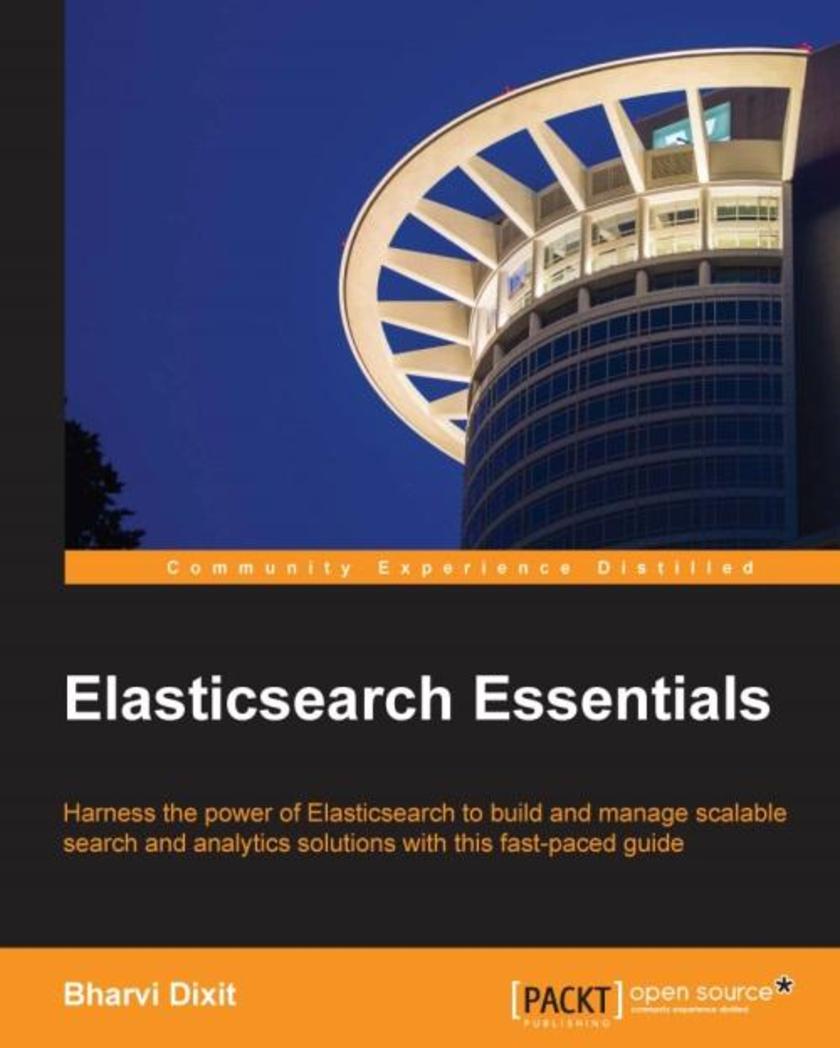
Elasticsearch Essentials
¥71.93
Harness the power of ElasticSearch to build and manage scalable search and analytics solutions with this fast-paced guideAbout This BookNew to ElasticSearchHere’s what you need—a highly practical guide that gives you a quick start with ElasticSearch using easy-to-follow examples; get up and running with ElasticSearch APIs in no timeGet the latest guide on ElasticSearch 2.0.0, which contains concise and adequate information on handling all the issues a developer needs to know while handling data in bulk with search relevancyLearn to create large-scale ElasticSearch clusters using best practicesLearn from our experts—written by Bharvi Dixit who has extensive experience in working with search servers (especially ElasticSearch)Who This Book Is ForAnyone who wants to build efficient search and analytics applications can choose this book. This book is also beneficial for skilled developers, especially ones experienced with Lucene or Solr, who now want to learn Elasticsearch quickly.What You Will LearnGet to know about advanced Elasticsearch concepts and its REST APIsWrite CRUD operations and other search functionalities using the ElasticSearch Python and Java clientsDig into wide range of queries and find out how to use them correctlyDesign schema and mappings with built-in and custom analyzersExcel in data modeling concepts and query optimizationMaster document relationships and geospatial dataBuild analytics using aggregationsSetup and scale Elasticsearch clusters using best practicesLearn to take data backups and secure Elasticsearch clustersIn DetailWith constantly evolving and growing datasets, organizations have the need to find actionable insights for their business. ElasticSearch, which is the world's most advanced search and analytics engine, brings the ability to make massive amounts of data usable in a matter of milliseconds. It not only gives you the power to build blazing fast search solutions over a massive amount of data, but can also serve as a NoSQL data store.This guide will take you on a tour to become a competent developer quickly with a solid knowledge level and understanding of the ElasticSearch core concepts. Starting from the beginning, this book will cover these core concepts, setting up ElasticSearch and various plugins, working with analyzers, and creating mappings. This book provides complete coverage of working with ElasticSearch using Python and performing CRUD operations and aggregation-based analytics, handling document relationships in the NoSQL world, working with geospatial data, and taking data backups. Finally, we’ll show you how to set up and scale ElasticSearch clusters in production environments as well as providing some best practices.Style and approachThis is an easy-to-follow guide with practical examples and clear explanations of the concepts. This fast-paced book believes in providing very rich content focusing majorly on practical implementation. This book will provide you with step-by-step practical examples, letting you know about the common errors and solutions along with ample screenshots and code to ensure your success.
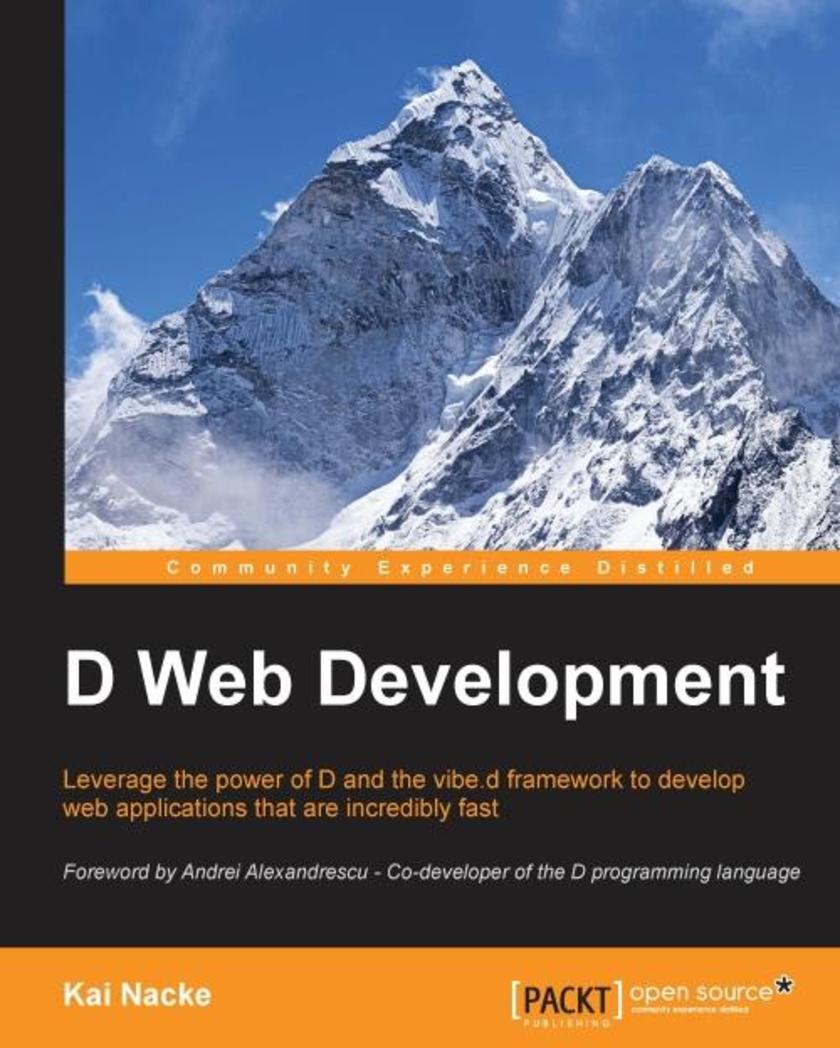
D Web Development
¥63.21
Leverage the power of D and the vibe.d framework to develop web applications that are incredibly fastAbout This BookUtilize the elegant vibe.d framework to build web applications easily and REST backends with the D programming languageLearn about all components of vibe.d to enhance your web development with DA hands-on guide to the vibe.d framework; from static web pages to template-based, interactive and localized web applications with database access and REST backendsWho This Book Is ForWhether you are new to the world of D, or already have developed applications in D, or if you want to leverage the power of D for web development, then this book is ideal for you. Basic knowledge of core web technologies like HTML 5 is helpful but not required. This book explains the difficult details to speed your web development.What You Will LearnCreate amazingly fast web applications with DUse Diet templates to easily create a web user interfaceUtilize the web framework for interactive applications with input validation and internationalizationAccess a database to provide persistent storage for your applicationExtend your application with a REST interface and access other applications via RESTUnderstand vibe.d’s fiber-based approach to asynchronous I/O and use it for integration of existing componentsCreate GUI applications with vibe.dIn DetailD is a programming language with C-like syntax and static typing. The vibe.d framework builds on powerful D concepts like template meta-programming and compile-time function execution to provide an easy-to-use environment for web applications. The combination of a feature-rich web programming framework with a language compiling to native code solves two common issues in web development today: it accelerates your development and it results in fast, native web applications. Learning the vibe.d framework before you start your application will help you to choose the right features to reach your goal.This book guides you through all aspects of web development with D and the vibe.d framework.Covering the popular operating systems today, this guide starts with the setup of your development system. From the first Hello World-style application you will move on to building static web pages with templates. The concise treatment of web forms will give you all the details about form handling and web security. Using the abstractions of the web framework you will learn how to easily validate user input. Next, you will add database access to your application, providing persistent storage for your data. Building on this foundation, you will expose your component and integrate other components via REST. Learning about the internals of vibe.d you will be able to use low-level techniques such as raw TCP access. The vibe.d concepts can also be used for GUI clients, which is the next topic that you will learn. vibe.d is supported by an active community, which adds new functionality. This comprehensive guide concludes with an overview of the most useful vibe.d extensions and where to find them. It also shows you how to integrate these extensions in your application.The concepts are always illustrated with source code, giving you an insight into how to apply them in your application.Style and approachA tutorial-style guide to develop web applications with D and the vibe.d framework. Each topic is explained in detail and illustrated with source code, providing you with hands-on assistance for your application.
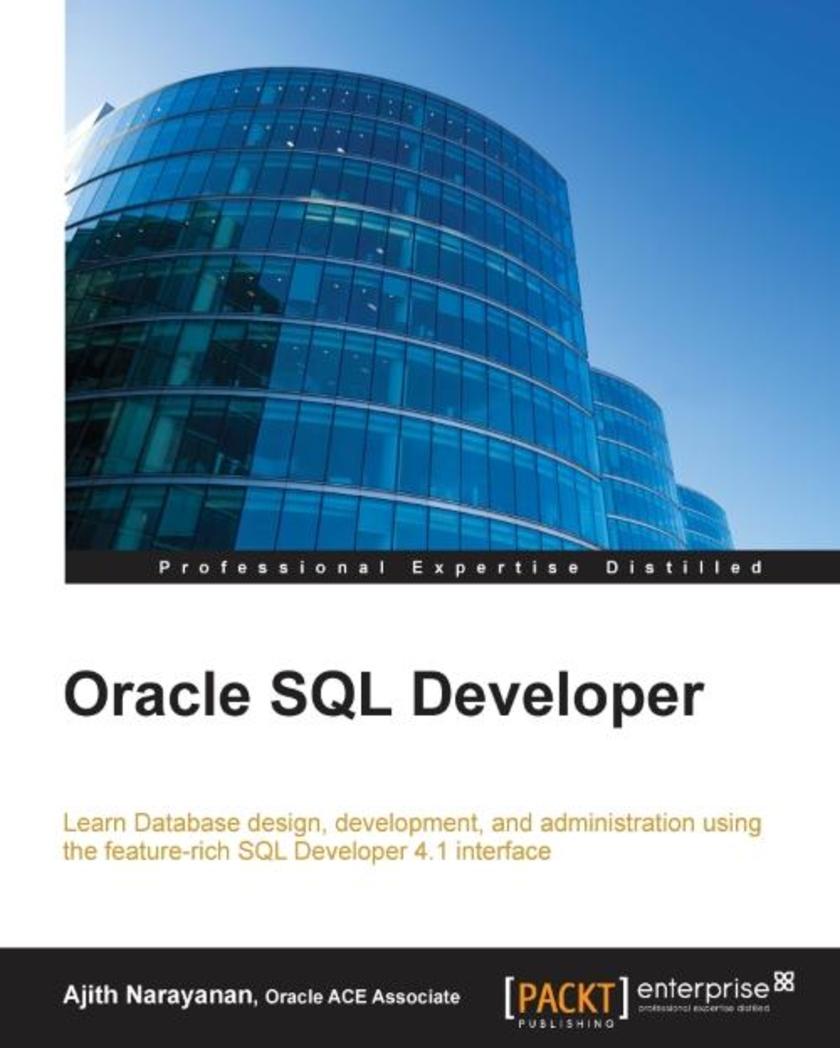
Oracle SQL Developer
¥99.18
Learn Database design, development,and administration using the feature-rich SQL Developer 4.1 interfaceAbout This BookExplore all the SQL Developer 4.1 features useful for Oracle database developers, architects, and administratorsUnderstand how this free tool from Oracle has evolved over the years and has become a complete tool that makes life easy for Oracle and third-party database usersThe author, Ajith Narayanan, has a total of 10+ years of work experience as an Oracle [APPS] DBAWho This Book Is ForThis book is intended for Oracle developers who are responsible for database management. You are expected to have programming knowledge of SQL and PL/SQL, and must be familiar with basic Oracle database concepts.What You Will LearnInstall and navigate through all the advanced features of SQL Developer that were introduced in version 4.1Browse, create, edit, and delete (drop) database objectsUse the SQL worksheet to run SQL statements and *s, edit and debug PL/SQL code, manipulate and export (unload) dataCarry out all DBA-related activities such as exporting/importing, tuning, and analyzing database performance issuesQuickly analyze, create, and edit the data model using data modelerExtend the SQL developer capabilities by exploring the APEX related pages, enabling and working with RESTful servicesUse the available reports and create new custom reports with custom *sGrasp how to connect to third-party databases and work smoothly with themIn DetailAt times, DBAs support 100s of databases at work. In such scenarios, using a command-line tool like putty adds to the difficulty, while SQL Developer makes the life of a developer, DBA, or DB architect easier by providing a graphical user interface equipped with features that can bolster and enhance the user experience and boost efficiency. Features such as DBA panel, Reports, Data Modeler, and Data Miner are just a few examples of its rich features, and its support for APEX, REST Services, timesten, and third-party database drivers demonstrate its extensibility.You may be a newbie to databases or a seasoned database expert, either way this book will help you understand the database structure and the different types of objects that organize enterprise data in an efficient manner. This book introduces the features of the SQL Developer 4.1 tool in an incremental fashion, starting with installing them, making the database connections, and using the different panels. By sequentially walking through the steps in each chapter, you will quickly master SQL Developer 4.1.Style and approachThis book follows a step-by-step approach and is in a conversational and easy-to-follow style. Screenshots , and detailed explanations of the basic and advanced features of SQL Developer 4.1 that will make your work and life easy.
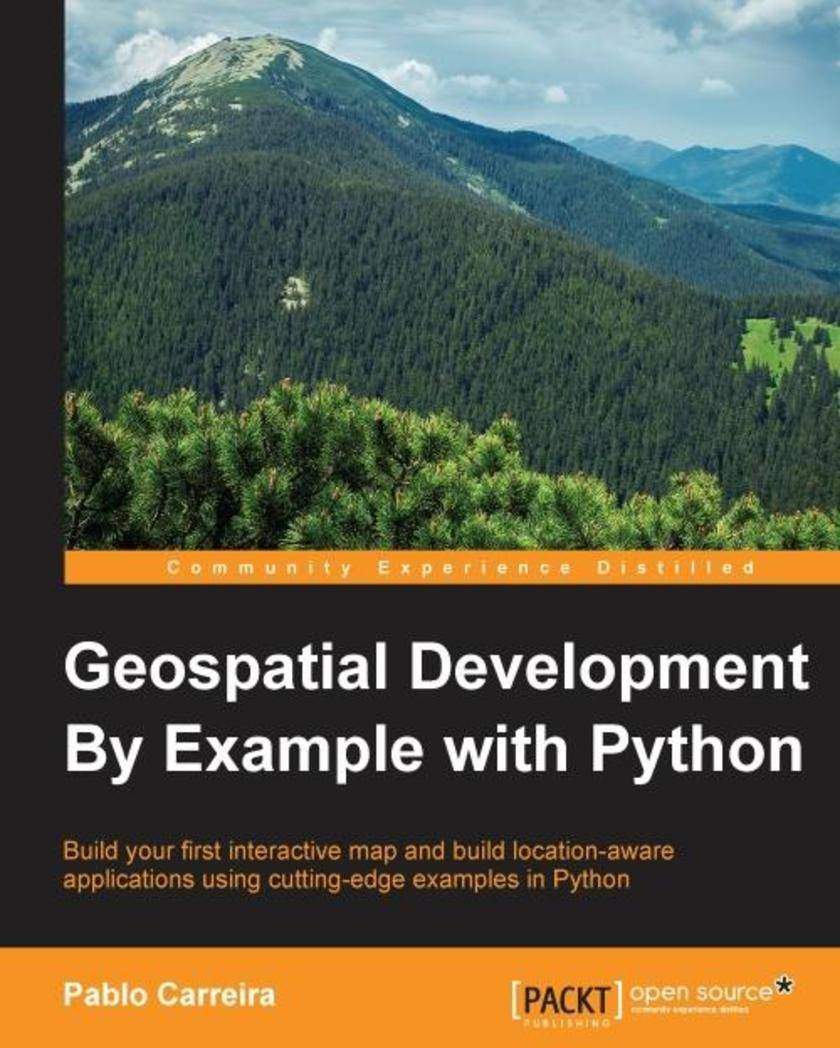
Geospatial Development By Example with Python
¥90.46
Build your first interactive map and build location-aware applications using cutting-edge examples in PythonAbout This BookLearn the full geo-processing workflow using Python with open source packagesCreate press-quality styled maps and data visualization with high-level and reusable codeProcess massive datasets efficiently using parallel processingWho This Book Is ForGeospatial Development By Example with Python is intended for beginners or advanced developers in Python who want to work with geographic data. The book is suitable for professional developers who are new to geospatial development, for hobbyists, or for data scientists who want to move into some simple development.What You Will LearnPrepare a development environment with all the tools needed for geo-processing with PythonImport point data and structure an application using Python’s resourcesCombine point data from multiple sources, creating intuitive and functional representations of geographic objectsFilter data by coordinates or attributes easily using pure PythonMake press-quality and replicable maps from any dataDownload, transform, and use remote sensing data in your mapsMake calculations to extract information from raster data and show the results on beautiful mapsHandle massive amounts of data with advanced processing techniquesProcess huge satellite images in an efficient wayOptimize geo-processing times with parallel processingIn DetailFrom Python programming good practices to the advanced use of analysis packages, this book teaches you how to write applications that will perform complex geoprocessing tasks that can be replicated and reused.Much more than simple *s, you will write functions to import data, create Python classes that represent your features, and learn how to combine and filter them.With pluggable mechanisms, you will learn how to visualize data and the results of analysis in beautiful maps that can be batch-generated and embedded into documents or web pages.Finally, you will learn how to consume and process an enormous amount of data very efficiently by using advanced tools and modern computers’ parallel processing capabilities.Style and approachThis easy-to-follow book is filled with hands-on examples that illustrate the construction of three sample applications of how to write reusable and interconnected Python code for geo-processing.
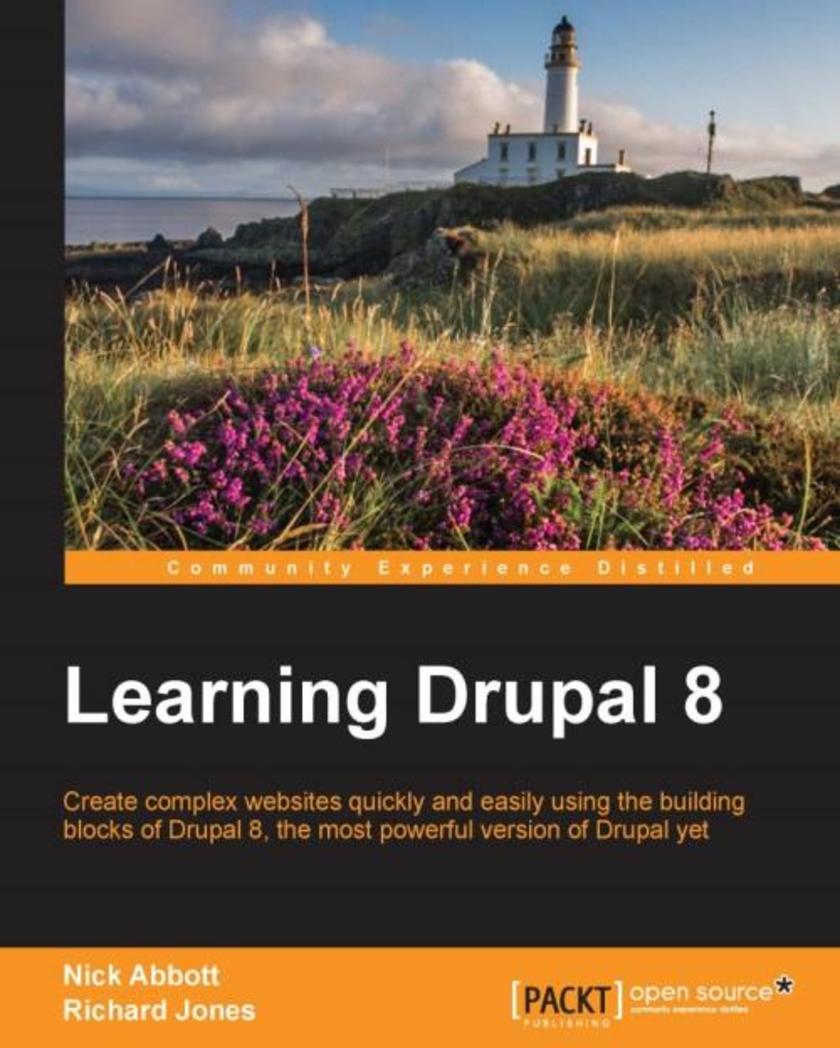
Learning Drupal 8
¥80.65
Create complex websites quickly and easily using the building blocks of Drupal 8, the most powerful version of Drupal yetAbout This BookBuild complete, complex websites with no prior knowledge of web development entirely using the intuitive Drupal user interfaceFollow a practical case study chapter-by-chapter to construct a complete website as you progressEnsure your sites are modern, responsive and mobile-friendly through utilizing the full features available in Drupal 8Who This Book Is ForIf you want to learn to use Drupal 8 for the first time, or you are transitioning over from a previous version of Drupal, this is the book for you. No knowledge of PHP, MySQL, or HTML is assumed or requiredWhat You Will LearnSet up a local “stack” development environment and install your first Drupal 8 siteFind out what is available in Drupal 8 coreDefine content types and taxonomies—and find out when you should do soUse the powerful Views moduleGet hands-on with image and media handlingExtend Drupal using custom community modulesDevelop the look and feel of your website using Drupal themesManage site users and permissionsIn DetailDrupal 8 sets a new standard for ease of use, while offering countless new ways to tailor and deploy your content to the Web. Drupal 8 allows user to easily customize data structures, listings, and pages, and take advantage of new capabilities for displaying data on mobile devices, building APIs, and adapting to multilingual needs.The book takes you step by step through building a Drupal 8 website. Start with the basics, such as setting up a local “stack” development environment and installing your first Drupal 8 site, then move on to image and media handling, and extending Drupal modules. Push your knowledge by getting to grips with the modular nature of Drupal, and learning to extend it by adding new functionalities to create your new modules. By the end of the book, you will be able to develop and manage a modern and responsive website using Drupal.Style and approachThis is an absolute beginners’ guide, providing step-by-step instructions to help you learn Drupal 8 from scratch.
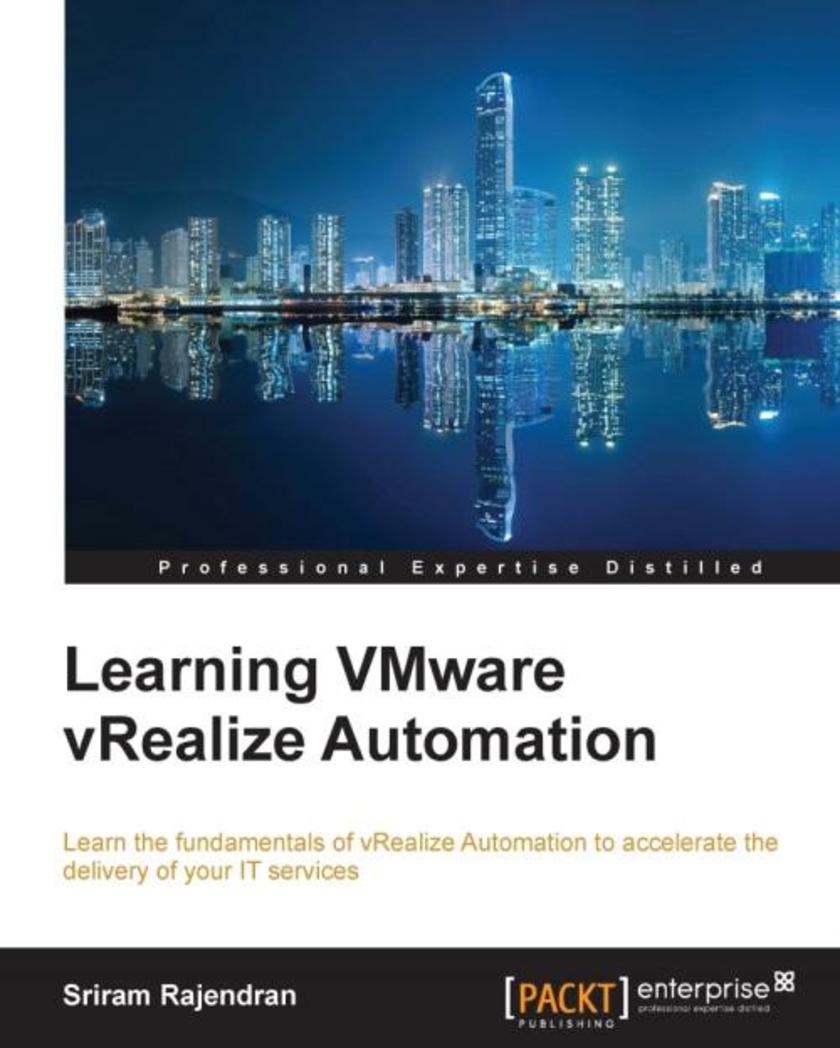
Learning VMware vRealize Automation
¥80.65
Learn the fundamentals of vRealize Automation to accelerate the delivery of your IT servicesAbout This BookLearn to install the vRealize Automation product in a distributed architecture using a load balancerPlan backup and recovery strategies for every vRealize automation componentUse vRealize Automation to manage applications and improve operational efficiency using this simple and intuitive guideWho This Book Is ForThis book is for anyone who wants to start their journey with vRealize Automation. It is your one-stop instruction guide to installing and configuring a distributed setup using NSX load balancer. Regardless of whether or not you have used vRealize Automation before, following the steps provided in each chapter will get you started with the product.What You Will LearnUnderstand the basic building blocks of vRealize Automation before embarking on the journey of installationFamiliarize yourself with the requirements and steps that need to be performed during the first phase of the distributed installationCarry out a functional validation of the first phase of installation before completing the installationBuild a blueprint for vSphere endpoint, an essential step for a successful deployment of a service catalogCreate, configure, and deploy tenants, endpoints, blueprints, and the service catalogGet to grips with the failover process for all components in vRealize AutomationLearn to configure the NSX loadbalancer for vRealize Orchestrator for high availabilityLeverage ASD to develop XaaS (Anything as a Service) in vRealize Automation to deliver valuable competenceIn DetailWith the growing interest in Software Defined Data Centers (SDDC), vRealize Automation offers data center users an organized service catalog and governance for administrators. This way, end users gain autonomy while the IT department stays in control, making sure security and compliance requirements are met. Learning what each component does and how they dovetail with each other will bolster your understanding of vRealize Automation.The book starts off with an introduction to the distributed architecture that has been tested and installed in large scale deployments. Implementing and configuring distributed architecture with custom certificates is unarguably a demanding task, and it will be covered next. After this, we will progress with the installation. A vRealize Automation blueprint can be prepared in multiple ways; we will focus solely on vSphere endpoint blueprint. After this, we will discuss the high availability configuration via NSX loadbalancer for vRealize Orchestrator. Finally, we end with Advanced Service Designer, which provides service architects with the ability to create advanced services and publish them as catalog items.Style and approachThis book takes a step-by-step approach, is explained in a conversational and easy-to-follow style, and includes ample screenshots . Each topic is explained sequentially through planning, preparing, installing, configuring, and validating of all vRealize Automation’s components.

Apple Pay Essentials
¥54.49
Harness the power of Apple Pay in your iOS apps and integrate it with global payment gatewaysAbout This BookBe it adding an Apple Pay button to your app or calculating sales tax with Apple Pay- this book gives you all the information you need to build a fully-functional Apply Pay applicationPaying within iOS Apps made easier and secure with this no nonsense and powerful guideEscape tedious payment options by creating compelling product card screens that present the Pay button, which your customers can tap to quickly order your productsWho This Book Is ForThis book is for anyone who wants to integrate Apple Pay in their applications. Basic familiarity with programming and the Xcode developer tools is expected.What You Will LearnDesign a product card that includes the Apple Pay buttonImplement the Apple Pay workflow in an efficient wayUse NSDecimalNumber objects to perform financial calculations accuratelyManage custom order information in the Apple Pay workflow and your custom order management systemExtract payment information from a payment tokenImplement a secure, server-side payment-processor programFind out everything you wanted to know about Apple Pay in iOS 9In DetailApple Pay, one of the most talked about offerings of the latest iOS 9 release, is a digital wallet and electronic payment system developed by Apple Inc. Paying in stores or within apps has never been easier or safer. Gone are the days of searching for your wallet, and the wasted moments finding the right card! Now you can use your credit cards and rewards cards with just a touch.It allows payment to merchants, using Near field Communication (NFC), and within iOS apps. Implementing Apple Pay within apps for payment is a bit tricky, but our book solves this problem for you.Whether you are a brand new iOS app developer or a seasoned expert, this book arms you with necessary skills to successfully implement Apple Pay in your online-payment workflow.Whether you are a brand new iOS app developer or a seasoned expert, this book arms you with the necessary skills to successfully implement Apple Pay. We start off by teaching you how to obtain the certificates necessary to encrypt customers’ payment information. We will use Xcode and Objective C for the interface and Node.js for server side code. You will then learn how to determine whether the customer can use Apple Pay, and how to create payment requests. You will come to grips with designing a payment-processor program to interact with the payment gateway. Finally, we take a look at a business-focused view of Apple Pay protocols and classes.By the end of this book, you will be able to build a fully functional Apple Pay-integrated iOS appStyle and approachThis is an easy-to-follow guide on integrating Apple Pay in your iOS Application. With step by step instructions along with excellent screen shots you will be able to learn everything that you wanted to know about Passbook and Apple Pay in iOS 8.
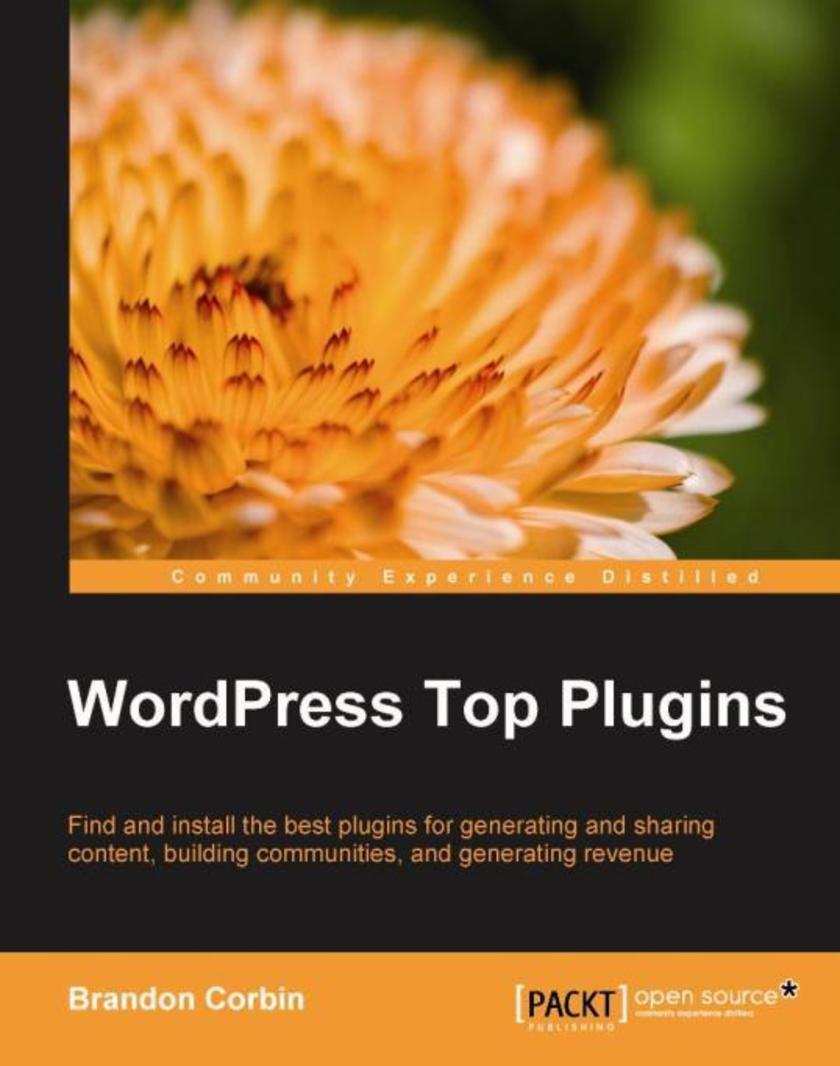
WordPress Top Plugins
¥71.93
Regardless of whether this is your first time working with WordPress, or you’re a seasoned WordPress coding ninja, WordPress Top Plugins will walk you through finding and installing the best plugins for generating and sharing content, building communities and reader base, and generating real advertising revenue.
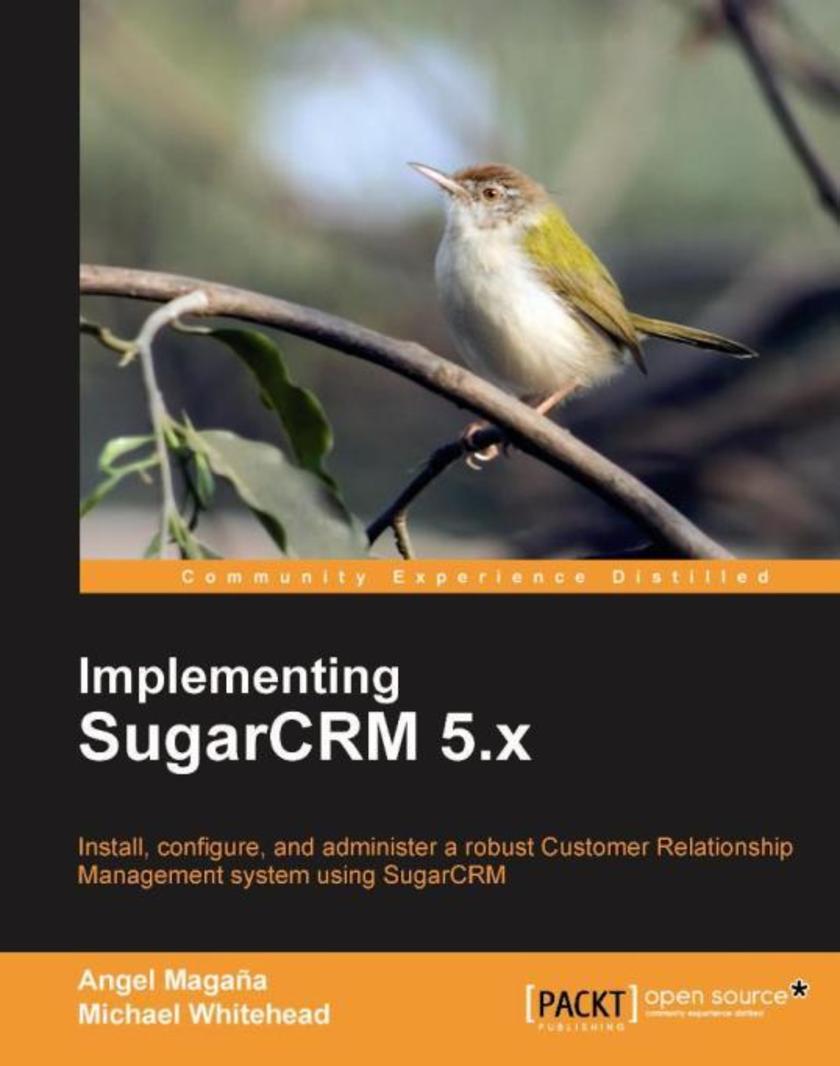
Implementing SugarCRM 5.x
¥90.46
The book works from the SugarCRM basics right up to advanced features in a clear and friendly way. It follows a combination of theoretical discussions relating to varying business needs and the manner in which CRM technology can address them. By helping you clarify your business goals the book enables you to build a CRM system to support your business needs. If you are a small-medium business owner/manager with reasonable IT skills, a system implementer, or a system administrator who wants to implement SugarCRM for yourself either as a first CRM or as a replacement for existing solutions, this book is for you. Existing SugarCRM users who want to broaden their understanding of the topic will find this book valuable too. No programming knowledge is required to use this book to implement, customize, and use SugarCRM.
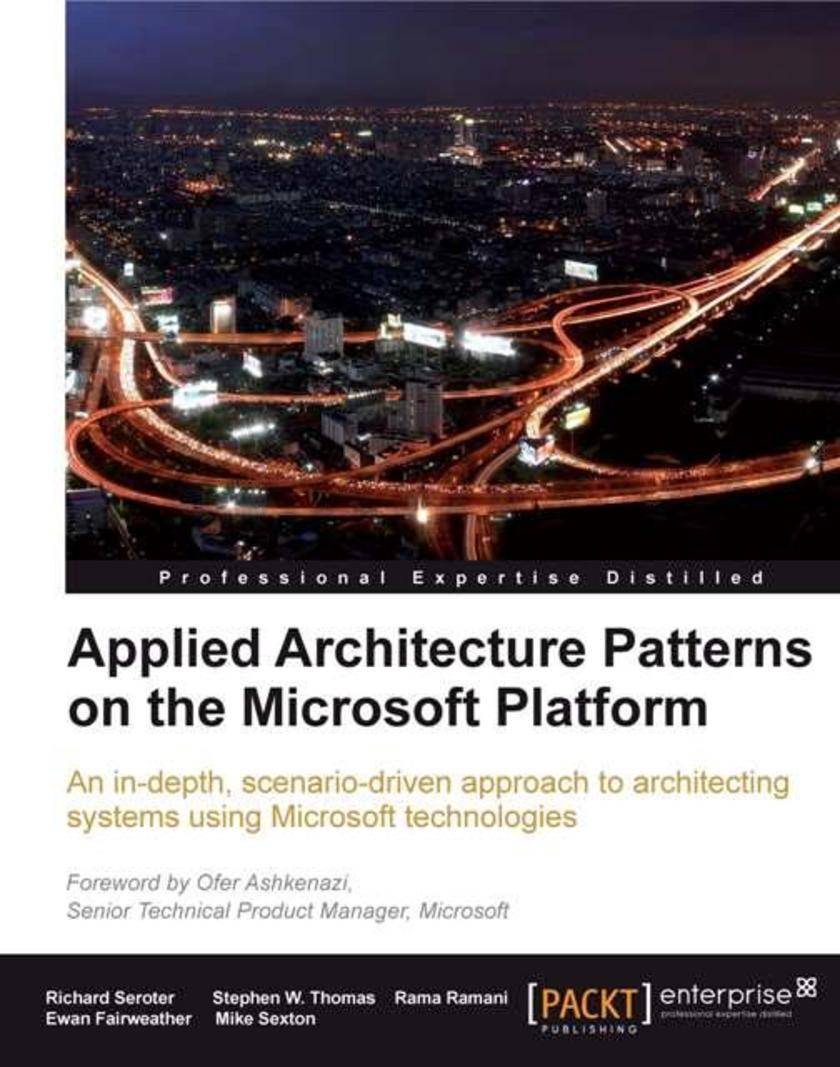
Applied Architecture Patterns on the Microsoft Platform
¥107.90
The book consists of a set of business scenarios and corresponding solution critiques. Each "use case" chapter is made up of a problem de*ion, assessment of implementation options, and the selection of the ideal solution candidate. We then construct the solution using the chosen Microsoft technology. This book is for architects, developers, and managers who need to improve their knowledge of the Microsoft application platform. This book will appeal to anyone who wants to get up to speed on selecting the most appropriate platform for a particular problem. Consultants and executive leadership will also find significant value in this book. A good understanding of the general Windows platform and development technologies would be helpful.
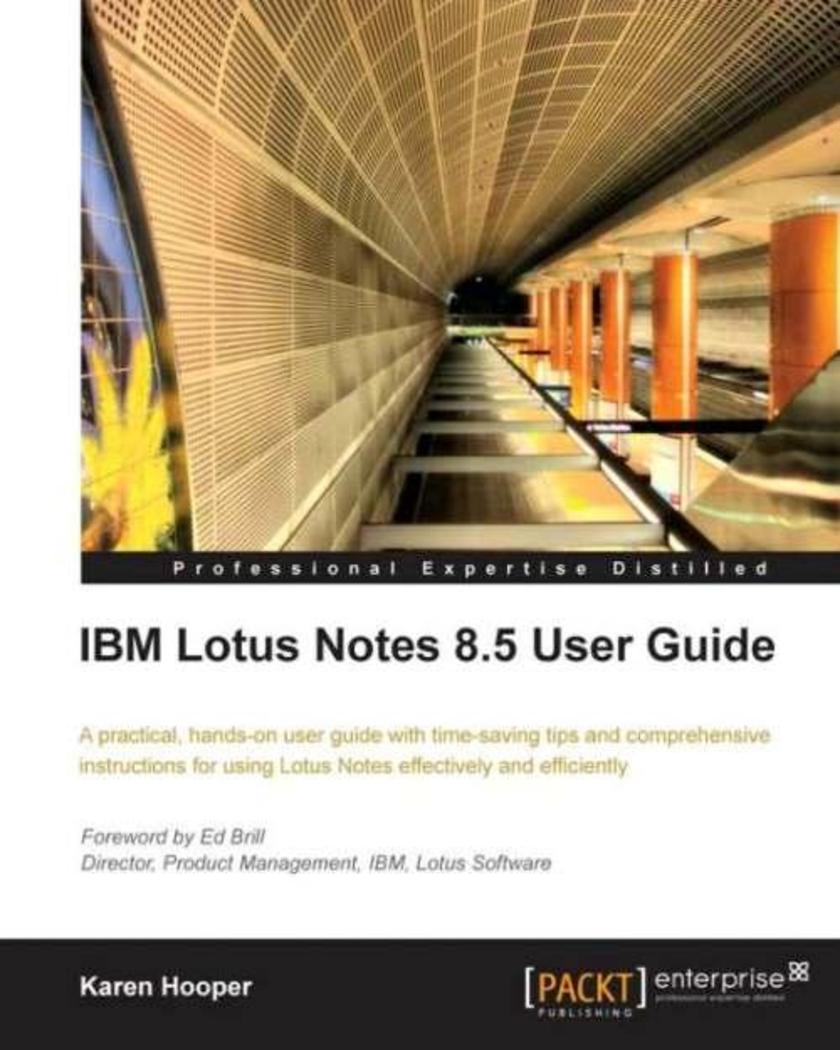
IBM Lotus Notes 8.5 User Guide
¥90.46
A compact Lotus Notes User Guide, this book covers best practices, hints, tips, and tricks of Lotus Notes 8.5. It draws on real-world examples and you will find this book to be an invaluable reference for Lotus Notes. There are significant changes from the earlier versions of Lotus Notes to the current version of 8.5 and this book covers the new features in detail so that you will be able to take advantage of them. However, this book also covers key features from earlier versions, which have stood the test of time. If you are a business user who wants to get the most out of Lotus Notes, then this book is for you. From beginners to seasoned professionals, this book aims to cover the features, best practices, tips, tricks, and tools that enable you to work smarter—almost effortlessly—in Lotus Notes 8.5.
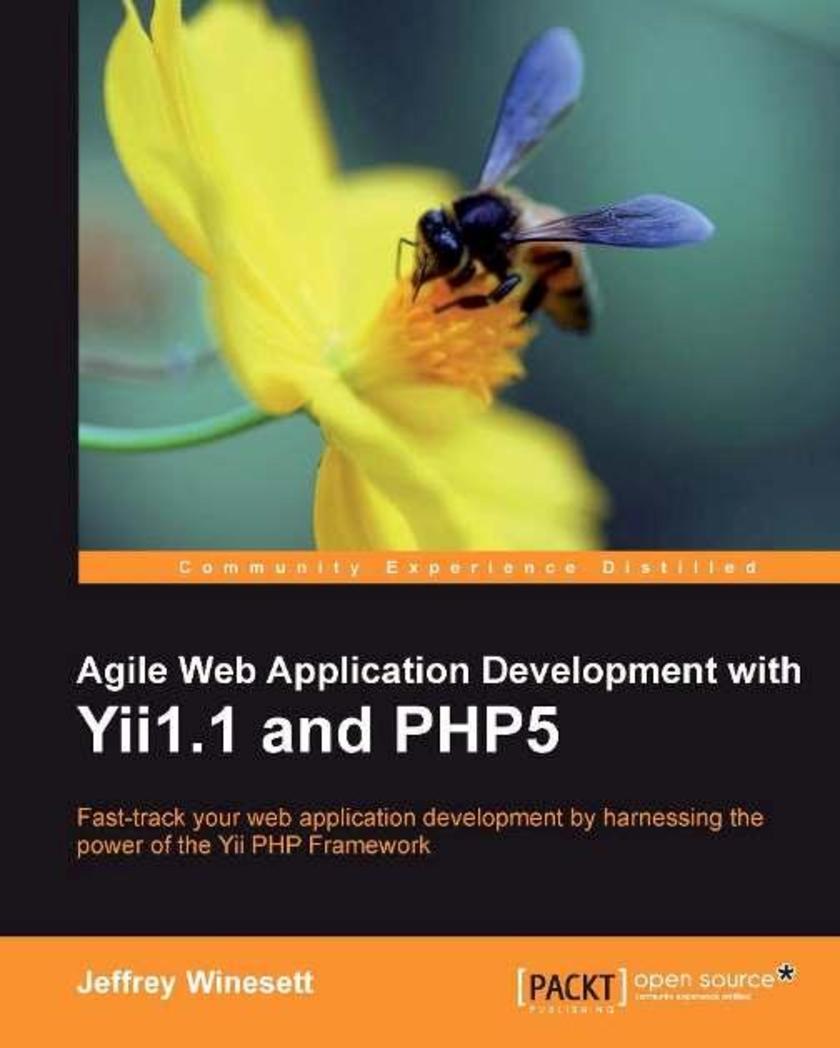
Agile Web Application Development with Yii1.1 and PHP5
¥71.93
This is a step-by-step tutorial for developing web applications using Yii. This book follows the test-first, incremental, and iterative approach to software development while developing a project task management application called "TrackStar". If you are a PHP programmer with knowledge of object oriented programming and want to rapidly develop modern, sophisticated web applications, then this book is for you. No prior knowledge of Yii is required to read this book.
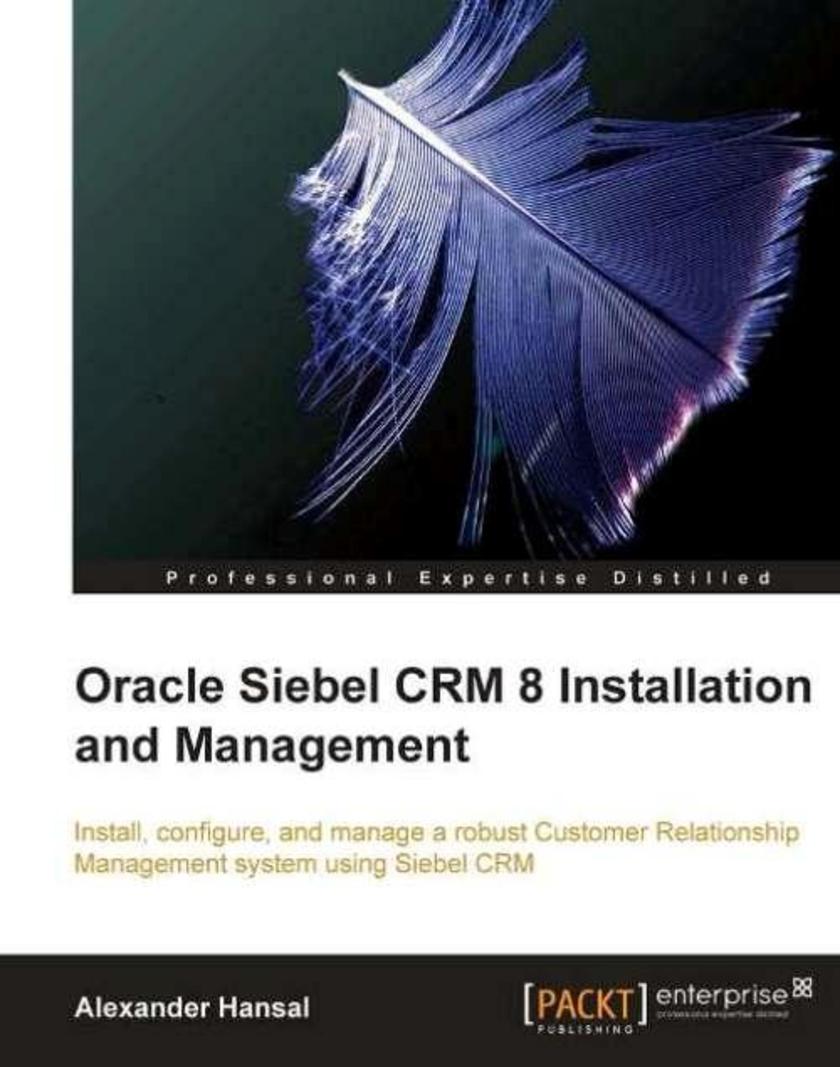
Oracle Siebel CRM 8 Installation and Management
¥125.34
This book provides a practical, hands-on experience. Chapter by chapter, a Siebel CRM self-study environment is created which can be used to follow the examples described in the book to explore the Siebel functionality. The book ensures that you understand what you are doing and why you are doing it. It contains clear step-by-step instructions, explanatory tables, screenshots, and precise diagrams. This book is for administrators who want to develop and strengthen their Siebel CRM skills in the areas of installation and system management. Whether you are a novice or a more experienced user, this book will teach you something new in many ways and by the end of the book, you will be ready to install and manage Siebel CRM in a real-world environment.
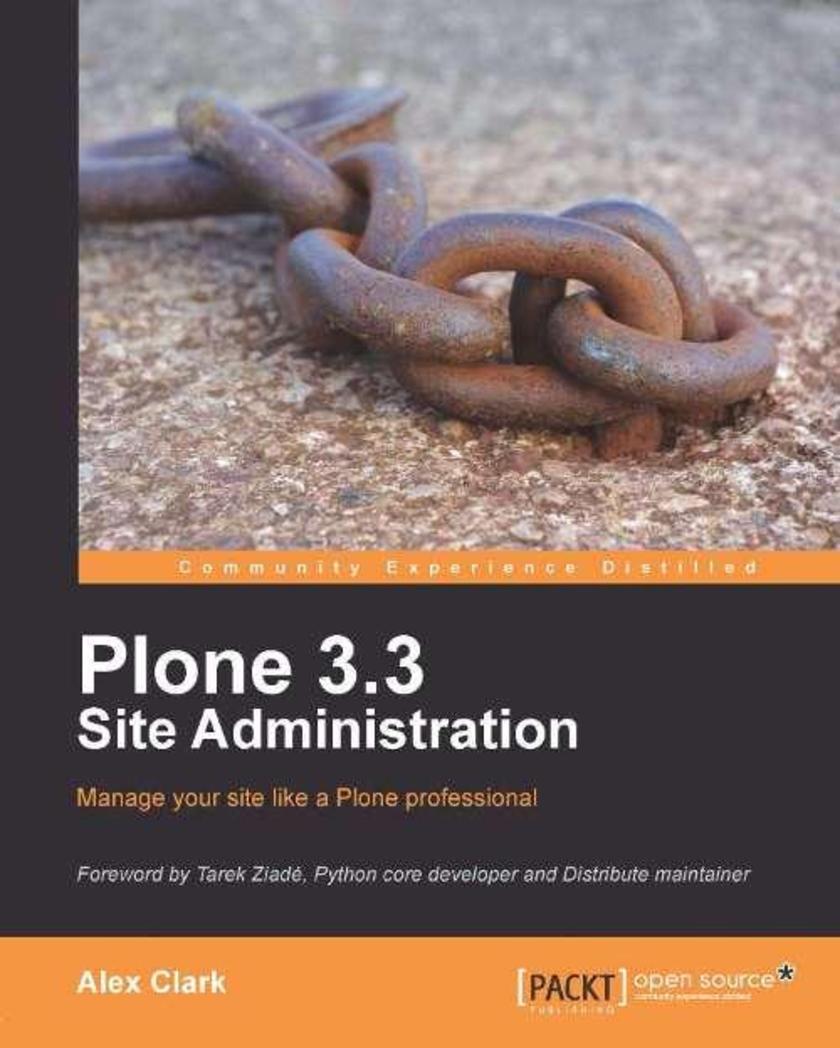
Plone 3.3 Site Administration
¥71.93
This book is a step-by-step tutorial guide, explaining many common and fundamentally important Plone site administration tasks. This book is designed for site administrators, webmasters, or content editors managing a site with Plone. These users will not be new to Plone itself, but they will be new to the site administration tasks. The reader is also expected to know basic Python programming. This book caters to these users, and builds their confidence by helping them to get their Plone sites up, running, and customized with minimal peripheral knowledge.
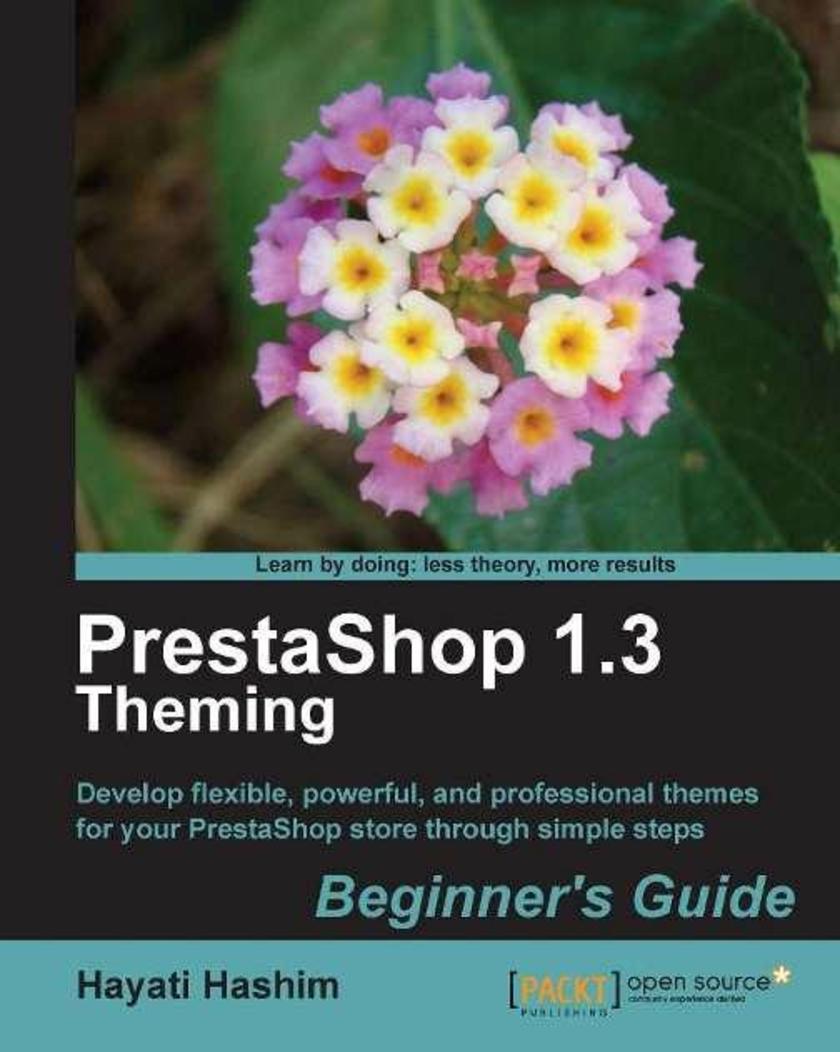
PrestaShop 1.3 Theming – Beginner’s Guide
¥71.93
This book is packed with step-by-step exercises that illustrate how to explore the different ways to create your themes for PrestaShop. Each chapter begins with an explanation of the topic and provides a quick exercise that can be applied to your theme. All topics are discussed using a simple yet practical approach to ensure that concepts are grasped easily. This book is meant for beginners to PrestaShop who want a hassle-free way to come up with their own themes. If you are a designer who enjoys creative work but does not want to spend too much time exploring the code, this book is for you. This book is also useful for those "layman" online store owners, who want to do their own modifications for their PrestaShop store.
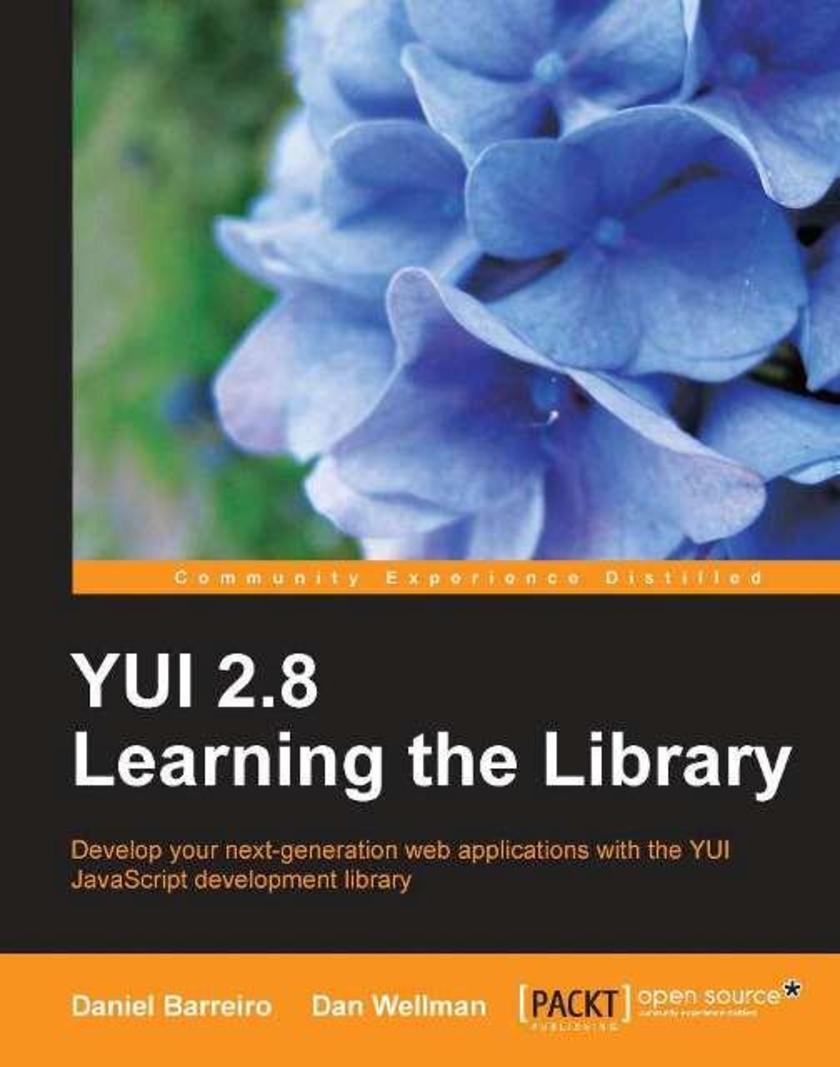
YUI 2.8: Learning the Library
¥80.65
The book is a tutorial, leading the reader first through the basics of the YUI library before moving on to more complex examples involving the YUI controls and utilities. The book is heavily example driven, and based around an approach of tinkering and extending to improve. This book is for web developers comfortable with JavaScript and CSS, who want to use the YUI library to easily put together rich, responsive web interfaces. No knowledge of the YUI library is presumed.
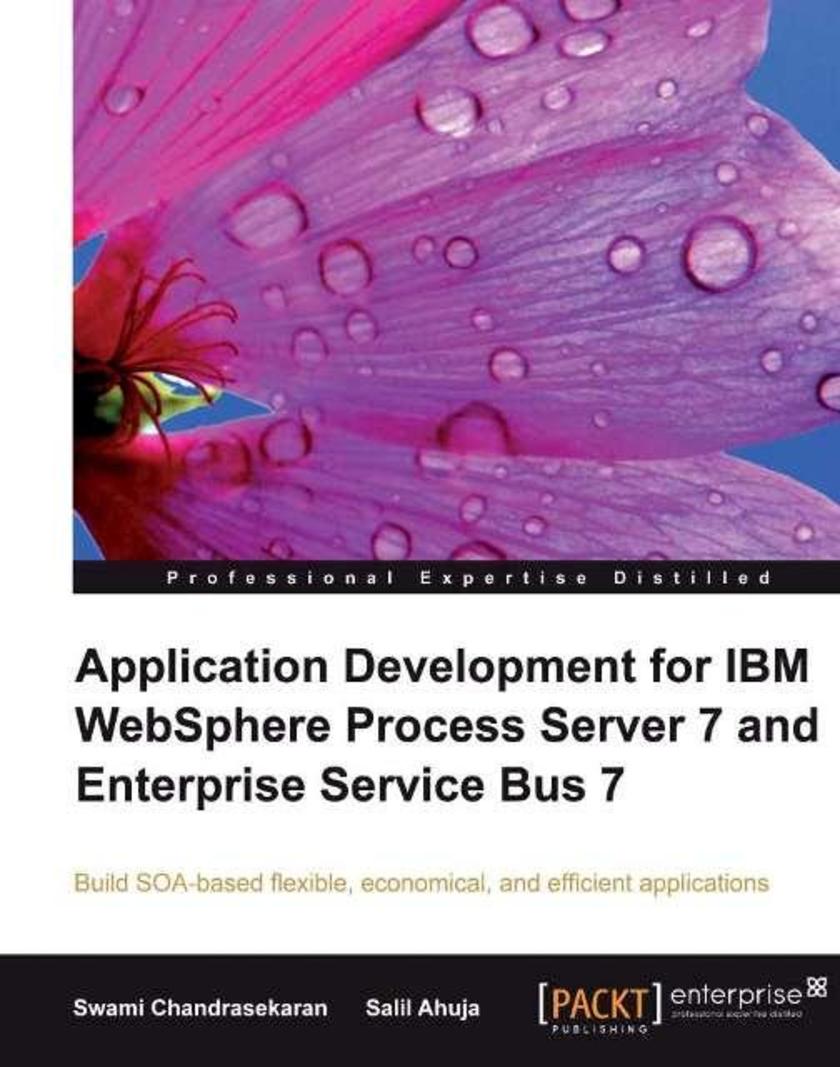
Application Development for IBM WebSphere Process Server 7 and Enterprise Servic
¥107.90
This book covers building an application using the principles of BPM and SOA, using WPS and WESB. The various detailed aspects, features, and capabilities of the product are conveyed though examples. It also provides pragmatic guidance on various aspects in relation to building the SOA application. Every section has solutions to common problems and pitfalls. This book is for SOA architects, designers, and developers who have a basic understanding of SOA concepts and would like to learn more about building solutions and applications using IBM WebSphere Process Server and WebSphere Enterprise Service Bus.
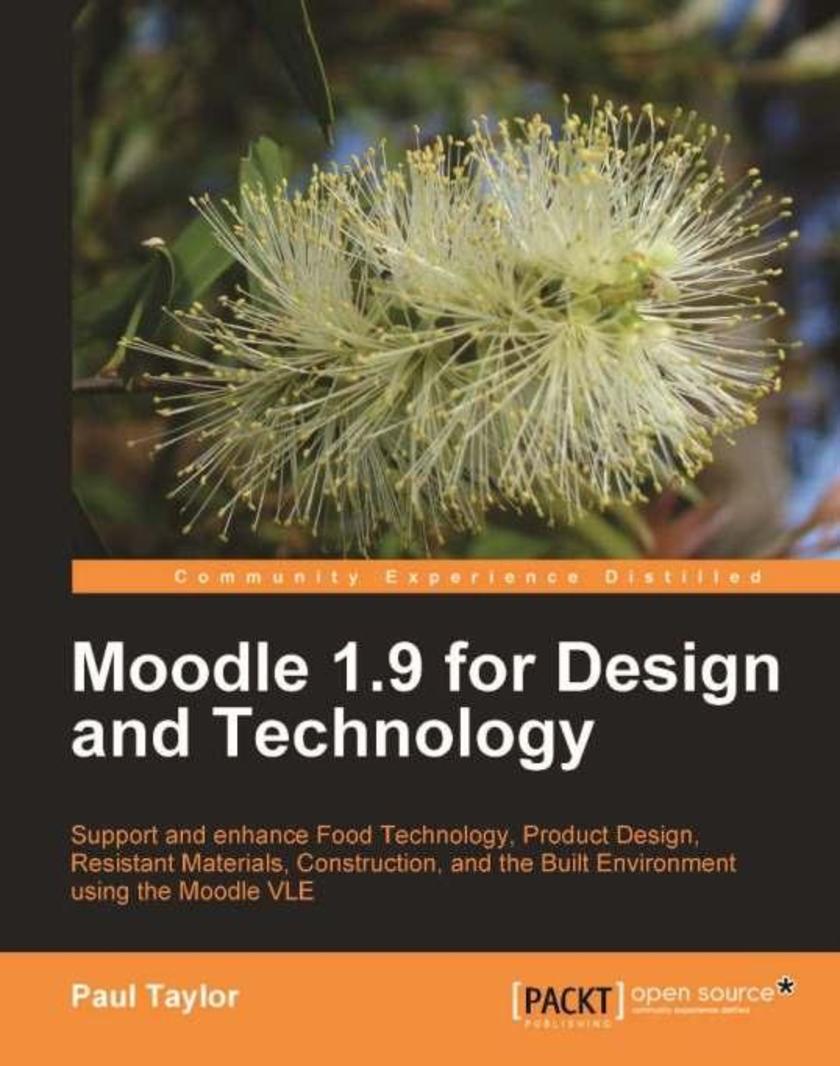
Moodle 1.9 for Design and Technology
¥71.93
This book has real-world samples of how to solve problems related to Design and Technology and offers tips on how to enhance the use of Moodle to get the most out of the subject. Worked examples will act as a base from which to build complex and exciting courses for students in all age ranges and abilities. If you are a Design & Technology teacher, teaching assistant, head of department, SMT, or IT technician in school and would like to use Moodle to design, create, or administer a VLE for Design and Technology, this book is for you. You need to know the basics of Moodle for teaching and learning and should have some experience with Design and Technology.
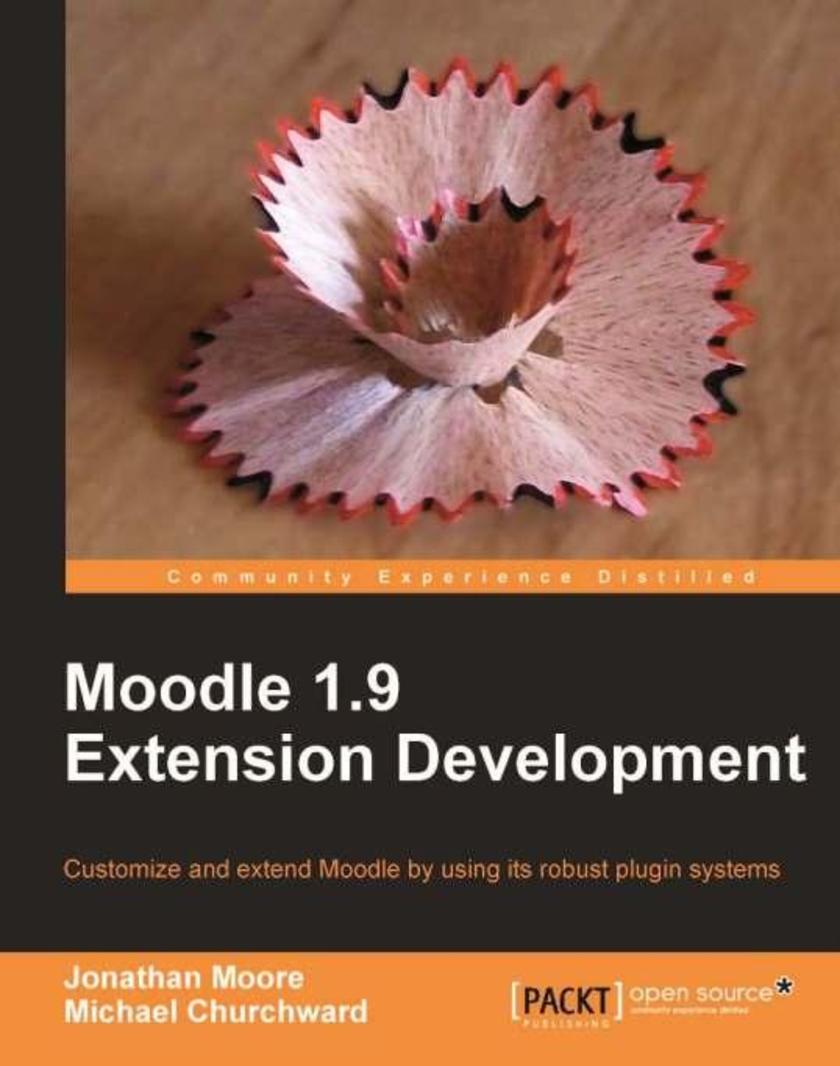
Moodle 1.9 Extension Development
¥90.46
The author’s experience as a Moodle developer enables him to combine a simple, de*ive how-to approach with enthusiastic insights into the rich potential of customizing Moodle according to your needs. The chapters gradually build up your skills and by the end of the book you will be confident enough to customize Moodle on your own. This book is written for technologists who are interested in expanding Moodle's functions through programming, either for their own organizations or to contribute to the open source project. You should be familiar with Moodle's basic technologies: PHP, MySQL ,and HTML/CSS.




 购物车
购物车 个人中心
个人中心



